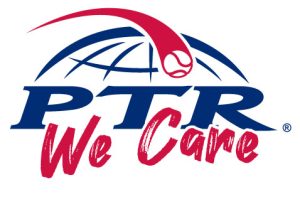I have worked in the private club industry for about 12 years. A love of the industry and recognition of how unique and special the people and the clubs are spurred me to engage full time with KOPPLIN KUEBLER & WALLACE.
The more clubs I visit and the more educational opportunities I attend, the more I know this is true. And I’m also aware of how many cultural issues mirror my previous corporate clients.
When I’m invited to a club to work on a search, coach, consult, or deliver team building or communications training, I observe first. One of the things I notice is the language they use. I listen and note how the team members communicate ─ verbally and non-verbally. It helps me to get a better sense of the overall culture.
Now, we all have a bad day from time to time and may go into one of the freezers, close the door and yell a few choice words…but that’s not what I’m talking about. I’m talking about one little word that can cause toxicity, infiltrate a culture, demoralize a team and increase attrition. It’s simple. The word is “I.”
Let me share some recent examples. Several weeks ago, a friend and I went to dinner at a trendy, casual restaurant in Manhattan. The server approached our table with a young lady right behind him. He smiled and said, “Hello, I’m John. I’ll be your server, and I’ll be taking care of you today. This is Lindsey; she’s training with me. I’ll give you a few more minutes to look over the menu.”
Lindsey did not seem happy when she left the table. I was embarrassed for both of them. It also seemed that Lindsey was questioning the type of team culture she had joined. It certainly didn’t feel inclusive. It also seemed to me that John needed some training. Specifically, he needed to work on his “we.”
The language of non-inclusion can manifest at so many touchpoints.
Another example was a job posting I recently read by a club looking for someone to fill a somewhat senior-level role. The position level doesn’t matter, but the posting began with “I am seeking a (blank) to join my team.” If I were an applicant, I would already be turned off. Whose team is it? Read that sentence out loud. Now read this: “We are seeking a (blank) to join our team.” Simple. Can you feel and hear the difference?
Or how about the department head who brings a team member or two to a presentation where perhaps those team members provided some input? Let’s say they addressed the group by saying, “I am here today to present” instead of “We are here to present.”
How does watching the language being used shift the culture in a positive direction? If you are a department head discussing an issue with the staff, think about how you open up the dialogue. What do you say? “I’ve noticed during the past month that many of you seem distracted.” Or this: “I’ve noticed during the past month that many of us seem distracted.”
The replacement of one little word says a lot about the department head’s leadership style. The department head is part of the team and reinforces that notion, even when something needs to be addressed and corrected. It bolsters overall trust and emphasizes the team concept.
Multiple linguistic and psychological studies conclude that using words that are more “other-focused,” such as “we,” “us” and “our,” is advantageous to building a more trusting, friendlier, more collaborative, more open to connectivity, communal environment.
In contrast, several studies showed that excessive “I” talk, using pronouns such as “I,” “me” and “you” — talk that is inward or self-focused — actually decreases connectivity, is associated with depression and causes employees to disengage.
Is it possible that the workplace is a bit depressed? Gray and gloomy? Are we striving for a dynamic, positive team culture but are not quite sure why we aren’t getting there? Maybe we need to take a deep dive into how our people communicate with each other and the language we use.
If we watch our language and are more mindful of being other-focused in our words, our words become actions and actions become habits. And … guess what? Positive habits are the foundation of a positive culture.
So, let’s all watch our language.








